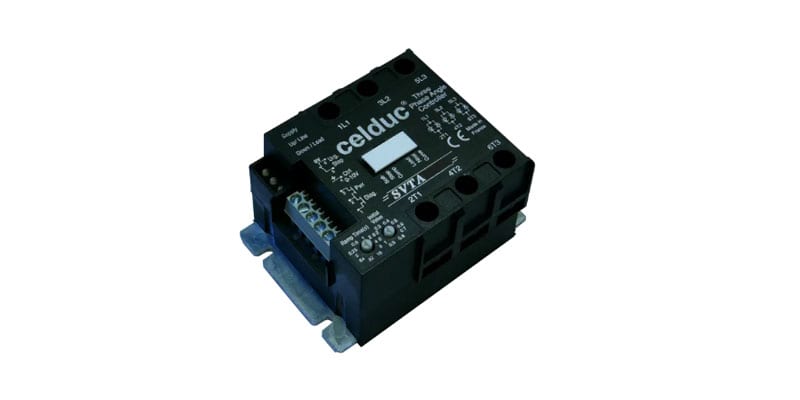Solid State Relays and the semiconductors & electronic components industries
Follow articleHow do you feel about this article? Help us to provide better content for you.
Thank you! Your feedback has been received.
There was a problem submitting your feedback, please try again later.
What do you think of this article?
Solid State Relays and the semiconductors & electronic components industries.
A booming global market
Semiconductors are materials which allow electricity to conduct electricity under specific conditions (electric tension, heating, lighting). They are essential to manufacturing technologies we use daily, from the automotive industry to the smartphone industry and solid state relay industry.
The semiconductors global market keeps on growing and reached a total of 550 billion euros in 2021.
Electronic components are devices that change one form of electrical energy into another. They are used in every single electronic object. The electronic components global market has greatly evolved and gained 100 billion euros in 7 years.
Unfortunately, following the global Health crisis, those two markets are going through huge shortages, making it harder and harder to supply all industries with semiconductors and electronic components.
Solid state relays: a necessity in every step of the semiconductors’ production
In the semiconductor and electronic component industries, solid-state relays are essential for every piece of equipment used during the manufacturing process, thanks to their capacity to work in harsh environments.
Rapid Thermal Annealing
Rapid thermal annealing process (thermal treatment) allows silicon wafers to be heated to very high temperatures in just a few seconds. Temperature control must be very precise in order to avoid building semiconductors with thick layers.
In order to build a thin layer, temperatures must be kept between 800 and 1200 °C. Solid state relays are then very important in this process to precisely control heating elements.
celduc® Key Products
Cleaning of semiconductors
In order to clean semiconductors and eliminate every small particles, scrubber systems are used. Solid state relays are massively used for the element control of the scrubber machines.
celduc® Key Products
Cooling
Once the rapid thermal annealing process is terminated, the next step is to cool down the semiconductors. Chillers are then used to down temperatures. This process needs to be very precise in terms of the temperature control of the liquid cooling or air condition cooling. Solid State relays are then used in the chillers to offer optimal control of the heating.
celduc® Key Products
Dry etching
Dry etching consists of using gases to remove thin layers of semiconductors.
Solid state relays are used during dry etching to control heating elements.
celduc® Key Products
Chemical Vapour Deposition
The Chemical Vapour Deposition process aims to produce thin-layered semiconductors. Solid-state relays are used during this process in order to control the heating elements generating the vapour.
celduc® Key Products
Gas supply systems
Gases are key enablers during the manufacturing of semiconductors. They are used during cleaning, etching, annealing, etc. These systems allow safely supply of the different manufacturing processes of semiconductors with gases.
celduc® Key Products
Solid state relays : a necessity in every step of the electronic components production
Wave soldering
Wave soldering is used to solder electronic components to a printed circuit. It is a very commonly used process in the electronic industry. Wave soldering is composed of four steps :
- Flux spraying: allows cleaning of the components to be soldered.
- Pre-heating: allows for accelerate of the soldering process and avoids any thermal shock. The printed circuits go through a thermal tunnel equipped with infrared lamps. This step needs very precise control of the heating temperature.
- Wave soldering: Printed circuits enter a molten tin soak heated between 220 and 240 °C. The temperature needs to be precisely regulated to avoid the tin melting (above 240 °C).
- Cooling: Printed circuits need to be cooled at room temperature in order to be successfully assembled.
Solid state relays are essential during steps two and three of the wave soldering process, as they guarantee precise temperature control.
celduc® Key Products :
Reflow soldering
Reflow soldering is an alternative process used to solder electronic components on printed circuits. This process is composed of 5 steps :
- Application of a soldering paste with a serigraphy process into the printed circuits.
- The electronic components are placed on the printed circuits.
- The electronic components and printed circuits are put in a thermal soak to activate the flux.
- Reflow soldering: allows to reach peak temperature to melt the soldering paste. If the temperature is too low, the soldering paste won’t melt correctly, and if the temperature is too high, it will damage the electronic components and printed circuits.
- Cooling: allows the solder to be solidified.
Solid state relays are essential during step three and four of the reflow soldering process, as they guarantee precise temperature control.
celduc® and the electronic industry
celduc® relais is an expert in electrical engineering and power electronics and works with customers and industries all over the world. Founded in 1964, celduc® relais is the only French company to manufacture solid-state relays.
The processes of studies, designs, manufacturing, tests and marketing are fully internalised.












